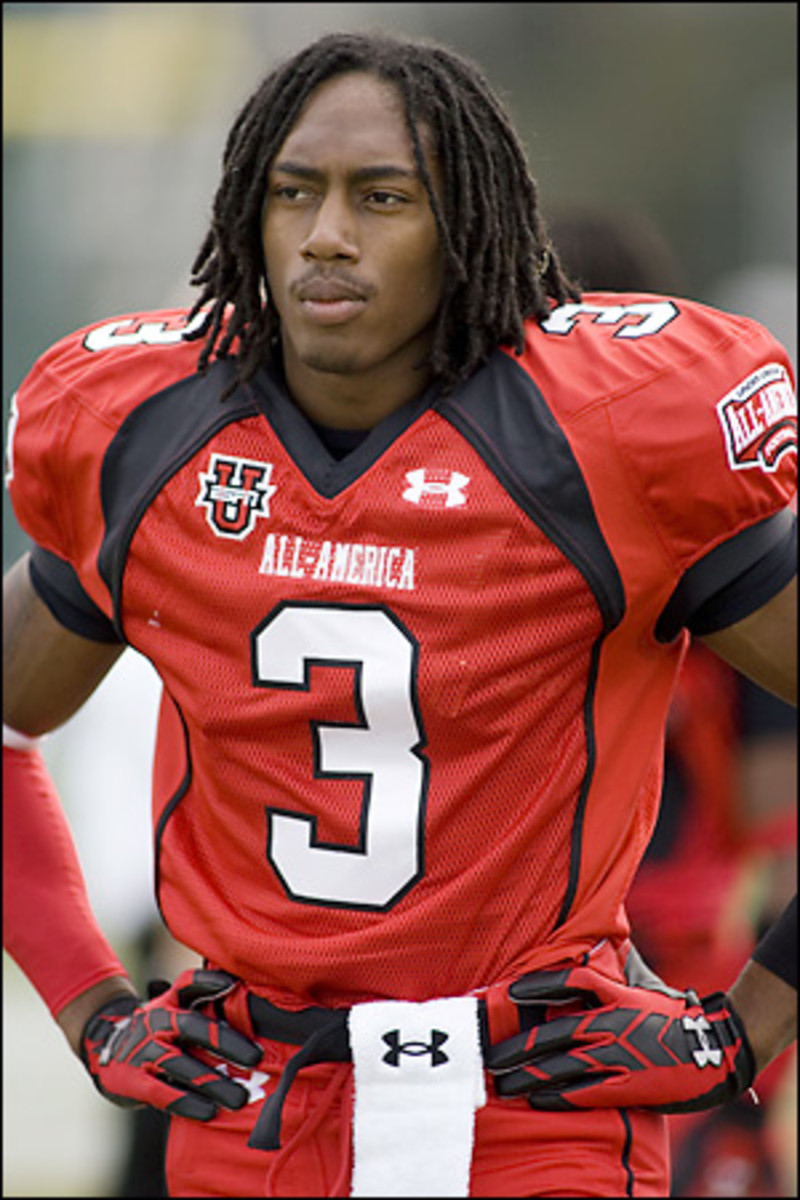Hot commodity
South Garland (Texas) High's Joseph Ibiloye tried to explain why he always seems to know where the ball will go. "Sometimes, you've got to think what you'd do if you were on offense," the Oklahoma-bound free safety said. "I look at field position. I look at the clock."
Then Ibiloye paused. Sometimes, he said, all the studying, the coaching and the reasoning melt away. Sometimes, something inside screams: Go get the ball!
"Sometimes, you take guesses," Ibiloye said. "It's instinct."
Quarterbacks, running backs and wide receivers might get most of the attention, but lately college coaches are coveting safeties, whose instincts turn them into football-seeking missiles, just as much. At every level of football, the position has experienced a renaissance as coaches have realized how versatile their defense can be with a true ballhawk in the secondary. While the middle linebacker remains the playcaller for most defenses, the free safety has become the ultimate slash player -- as in cover/tackle/run support/blitz/punish.
The best free safeties do all five things well, and defensive coordinators love them for it. Got a shaky front seven? Use your ballhawk as a one-high safety and put your strong safety in the box. Nothing's getting past your man in the back. Have a suspect corner? Roll your ballhawk to his side and watch him dart in to pick off a pass from a quarterback who never saw him coming. Want to really mess with the quarterback's head? Blitz your ballhawk.
Ballhawk is an apt term, too. In nature, hawks use superior vision, an excellent vantage point and breathtaking closing speed to hunt their prey. Those essentially are the same tools a free safety needs to wreak havoc on an offense.
Philadelphia Eagles safety Brian Dawkins (who attended Clemson) was one of the first of the new generation of ballhawks. Former Miami Hurricanes standout Ed Reed and the late Sean Taylor subsequently expanded the minds of defensive coordinators as they exploded into ballcarriers and receivers. LSU's LaRon Landry (who now plays for Washington) and Florida's Reggie Nelson (Jacksonville) were their teams' ultimate weapons on defense in 2006, and that made them first-round draft picks. Before last year's draft, Redskins defensive coordinator Gregg Williams told ESPN.com that Landry is "like a Swiss Army knife."
The impact those players made in the NFL and in college has taught college coaches that they need at least one ballhawk in the secondary at all times. They'd prefer to stockpile them and play them together. If the 6-foot-2, 200-pound Ibiloye can develop quickly, Oklahoma coaches may play him next year in nickel situations alongside senior Nic Harris, who had 9.5 tackles for loss, two interceptions, two forced fumbles and seven pass breakups in 2007.
At UCLA, the new Bruins staff hopes to sign local product Rahim Moore (L.A.'s Dorsey High), who brings cover skills and a penchant for teeth-rattling hits. In South Bend, Notre Dame coaches hope Stone Mountain (Ga.) Tucker High's Jamoris Slaughter eventually can reproduce some of the scenes from his prep highlight reel. First, Slaughter crushes a back who has slipped past the front seven. Next, Slaughter blazes from the far hashmark to the near sideline just in time to intercept a tipped pass.
In Gainesville, Florida coaches are hoping either Will Hill of Jersey City, N.J., or Dee Finley of Auburn, Ala., will be the next Nelson, a player the Gators sorely missed this past season. Florida coach Urban Meyer called Nelson "The Eraser" in 2006 -- not because of his ability to concuss receivers over the middle, but because he could wipe away the mistakes of his teammates. Without him, the Gators had to use more two-high schemes (both safeties back), and the pass rush suffered. And as Meyer and his staff watched their safeties whiff on tackles in 2007, they realized just how much they missed Nelson.
"That's like the quarterback of the defense," Meyer said a few days after a particularly porous day against Ole Miss. "If you miss a play there, the opponent's band's playing."
Ibiloye, the Oklahoma recruit, understands the pressure on him to predict plays accurately. That's one reason why he says a prayer before every play. Still, that prayer isn't always answered. He recalled a play last season when he bit on a play fake. He'll never forget how he felt watching the pass sail over his head as he said another prayer: Please let the cornerback bail me out.
"It's like the whole world stops," Ibiloye said.
But Ibiloye rarely guesses wrong, South Garland coach Mickey Moss said. Playing alongside strong safety Courtney Osborne (who is considering Oklahoma State and UNLV), Ibiloye could cover as well as he could cream a ballcarrier. On any given play, he could rush the passer, force a fumble or make a touchdown-saving shoestring tackle. That's why coaches from almost every school in the top 25 offered him a scholarship, and that's why Moss believes the Sooners will enjoy having Ibiloye in crimson and cream.
"Oklahoma is going to get itself a jewel," Moss said.
Or a hawk.






